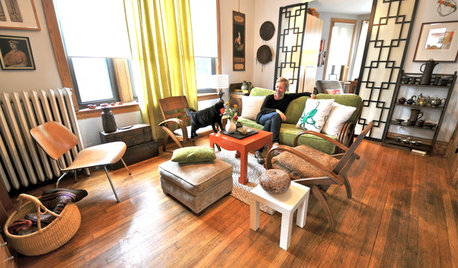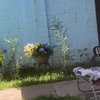A "Nutty" Story
kentrees12
7 years ago
Featured Answer
Sort by:Oldest
Comments (12)
Logan L Johnson
7 years agoRelated Discussions
a fig orchard success story
Comments (12)Hi Bud, I didn't notice anything looked left out. It is a good video. You did a good job with it. I don't have a mind for cyper-anything, I'm afraid. I can do things if I'm shown, but if I'm away from it for too long, I have to be re-trained. I haven't gotten to where I can post photos on the forums yet. My husband was going to coach me last year, but he got sick and I was taking care of him for months. I teased him about it, telling him some people will do anything to keep from having to show someone how to post photos on the forum. And people tell me it's so easy. Am not good with instructions. But I'll learn. I didn't think about sandy soil being easier to pull nutgrass out of. Of course it would be. I recall one year, I got some nutgrass killer you had to put on with an eyedropper, into the middle of each piece of grass that grew. I tried it and it didn't work on the few I put it on and then I looked and saw how much I'd have to drop the stuff on and went back in the house, thinking they must be crazy to expect someone to use a dropper on a yardfull of that stuff. Wire grass doesn't seem like such a great thing, either. I don't know what that is. I did wonder about why the neighbor's grass was all dead-looking. Don't worry--I'll never tell..... ;) What I have found is that cypress mulch does a number on nutgrass, plus it tries to grow in the mulch and then it's easy to pull up the strings, but that grass also has seeds! It's a real survivor and it can pierce any kind of weed cloth, or plastic mulch you put down, even in layers. I HATE that stuff. Why couldn't a lawn grass be like that? I only recently learned that it's called nutsedge. Didn't know what that was, but saw some nutsedge killer and took a good look and suspected that was the same as nutgrass. One thing about it is it sure would hold soil together, the way it grows. An erosion fighter. noss...See MoreTwo Stage for Two Story? Nutty Contractor?
Comments (4)I work for a reputable hvac contractor in the south. We sell 80% and 90% furnaces, one-stage, two-stage, and variable speed. We sell AC and heat pump up to 18 SEER. We always try to give the HO a choice. It seems the bigger the house, the more the HO wants. For those with smaller houses, the upgraders tend to go for the AC first, then things like filtration and humidification, then the nice furnace. These are people who are gainfully employed and who plan to be in the same house 5 to 10 years later. That being said, I have a small house. I replaced my system 9 years ago, upgrading my AC to 12 SEER and adding Aprilaire filtration. Now, the one thing I really wish I had done is upgrade to a variable speed furnace. As far as that contractor goes, you may have to read between the lines some more. Maybe he genuinely cared about your parents' best interests. Maybe the president backed him up. Maybe you can find out what he sells to younger couples in small houses. Maybe Lennox has been putting out some bad product. Maybe he is thinking about switching brands and does't want the call-backs. Maybe he is a stick in the mud....See MoreA nutty problem
Comments (1)I have BEEN there. Really. Craziest thing, and I feel silly saying "well I did an internet search and a whole buncha people complained about it". But really. I'd been eating pine nuts from Trader Joe's for a while and then I got a bad bag I guess. Developed a strange bitter aftertaste for everything (but not while I was eating so I didn't lose weight-bah!). Didn't link it to the pine nuts until I googled something like "bitter taste" and one of the first search suggestions was pine nuts. So... Anyway yes. It's real. It's kind of amusing. I tossed the bag and eventually got a new one, and it did the same thing. I should try again. I do love the things. My symptoms only last a few days. (I'm not really one of those "I read it on the internets so it must be true" people, except for recipes of course, but I tested the pine nut connection a few times and the correlation was perfect.)...See MoreNutty BMs -- most but not all - con't
Comments (27)Marie, BM and DH did not go to court until their son was almost 6 years old. They were split from the time he was 1. For 5 yrs, DH paid 100% of daycare, health insurance, and paid for whatever his son needed, from clothes to tumbling lessons to swim lessons, etc They ALWAYS had 50-50 custody. My Dh has ALWAYS supported his son, always, always. BM was collecting food stamps, and medical benefits from the state, and put *unknown* down for DH's whereabouts. I know for a fact this is insurance fraud since DH has always covered his son under his work policy, but BM chose to not use it. So when they finally got into court (over school district issues) BM filed for child support. DH had no idea until then that she had been receiving benefits. His attorney pushed the fraud issue, and that was how it was determined that a portion (although we were told all) of the c/s would go to pay back the state. Seems fair to me. BM really just kind of screwed herself because if she had needed more money back THEN, she could have filed for child support rather than going through the state. Then DH would have had to pay more in support, but BM would have gotten 100% of it. It was basically robbing Peter to pay Paul. DH should have gone to court sooner, as well. He paid on average $200/wk for daycare for 5 years. That's $800/month. His child support, without 50-50 custody, would have been $600-something a month. In their parenting plan, it now states that BM is 100% responsible for any childcare costs. So DH paid more in daycare for 5 yrs than he would have if he had just gone to court and had child support established....See Moretsugajunkie z5 SE WI ♱
7 years agolast modified: 7 years agokentrees12 thanked tsugajunkie z5 SE WI ♱kentrees12
7 years agokentrees12
7 years agomiketropic
7 years agomaackia
7 years agolast modified: 7 years agojocelynpei
7 years ago
Related Stories

LIFEHouzz Call: Show Us Your Nutty Home Fixes
If you've masterminded a solution — silly or ingenious — to a home issue, we want to know
Full Story
LIFEYou Showed Us: 20 Nutty Home Fixes
We made the call for your Band-Aid solutions around the house, and you delivered. Here's how you are making what's broken work again
Full Story
LIFEShow Us More of Your Nutty Home Fixes
We’d love to see what you’ve rigged up lately to make your home run smoothly
Full Story
GLOBAL STYLEMy Houzz: A Chicago Two-Story Circles the Globe
International travelers bunk downstairs, while pieces plucked from around the world grace both levels of this two-unit home
Full Story
PETSHouzz Call: Show Us Your Summer-Loving Dog!
Share a photo of your pooch kicking back in the backyard, helping you in the workshop or enjoying your favorite summer getaway
Full Story
LIFEYou Said It: ‘It’s Important to Wait’ and More Houzz Quotables
Design advice, inspiration and observations that struck a chord this week
Full Story
LIFEHow to Build Your Housekeeping Muscle
Train yourself to clean and organize until the routine becomes second nature with this step-by-step approach
Full Story
LIFEYou Said It: Memorable Quotes Around Houzz This Week
Share in the design advice, analogies and statements from the Houzz community that have struck a chord
Full Story
You Said It: Hot-Button Issues Fired Up the Comments This Week
Dust, window coverings, contemporary designs and more are inspiring lively conversations on Houzz
Full Story
EXTERIORSWhere Front Yards Collide: Property Lines in Pictures
Some could be twins; others channel the Odd Couple. You may never look at property boundaries the same way again
Full Story





maackia